Showing Spotlights 473 - 480 of 2783 in category All (newest first):
 Those of us who work in the field of nanoscience know all about the uniqueness of the nanoscale. However, now that use cases for nanotechnology are ramping up across virtually all industry sectors, it's essential to take a step back and remember that few in the business world have experience like ours. In fact, many in the C-suite may be unsure of what nanoscience is or how their businesses could benefit from it. That's a big problem - because these decision makers are not going to support nanotechnology projects that they don't fundamentally understand. We need to rise to the challenge and start helping business leaders appreciate the distinctiveness and enormous potential of this rapidly evolving field.
Those of us who work in the field of nanoscience know all about the uniqueness of the nanoscale. However, now that use cases for nanotechnology are ramping up across virtually all industry sectors, it's essential to take a step back and remember that few in the business world have experience like ours. In fact, many in the C-suite may be unsure of what nanoscience is or how their businesses could benefit from it. That's a big problem - because these decision makers are not going to support nanotechnology projects that they don't fundamentally understand. We need to rise to the challenge and start helping business leaders appreciate the distinctiveness and enormous potential of this rapidly evolving field.
May 7th, 2020
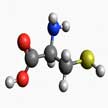 The structure of individual molecules and their properties, such as chirality, are difficult to monitor in real time. It turns out that temporarily bridging molecules together can provide a lens into their dynamics. Scientists now have exposed new pathways for investigating biochemical reactions at the nanoscale. They found that optoplasmonic coupling allows for the detection of biomolecules that approach nanoparticles, while they attach, detach, and interact in a variety of ways. The technique paves the way for many future single-molecule analysis techniques that researchers have only been dreaming about.
The structure of individual molecules and their properties, such as chirality, are difficult to monitor in real time. It turns out that temporarily bridging molecules together can provide a lens into their dynamics. Scientists now have exposed new pathways for investigating biochemical reactions at the nanoscale. They found that optoplasmonic coupling allows for the detection of biomolecules that approach nanoparticles, while they attach, detach, and interact in a variety of ways. The technique paves the way for many future single-molecule analysis techniques that researchers have only been dreaming about.
May 6th, 2020
 Sintering is a critical processing technology in the production of ceramic materials that uses high heat to compact ceramic powders into a solid form. Sintering of pure oxide ceramics requires relatively long processing times (about 20 hours) and high temperatures of 800 degrees Celsius or more. Researchers have now developed an ultrafast high-temperature sintering technique to fabricate solid state electrolytes for solid state batteries with dense structure and excellent electrochemical performance.
Sintering is a critical processing technology in the production of ceramic materials that uses high heat to compact ceramic powders into a solid form. Sintering of pure oxide ceramics requires relatively long processing times (about 20 hours) and high temperatures of 800 degrees Celsius or more. Researchers have now developed an ultrafast high-temperature sintering technique to fabricate solid state electrolytes for solid state batteries with dense structure and excellent electrochemical performance.
May 4th, 2020
 Inspired by living organisms, researchers have developed a somatosensory light-driven robot (SLiR) that can simultaneously sense strain and temperature. The SLiR subsumes pyro/piezoelectric responses and piezoresistive strain sensation under a photoactuator transducer, enabling simultaneous yet non-interfering perception of its body temperature and actuation deformation states. This design confers soft robots with complex perceptions of their body status, as well as the surrounding environments.
Inspired by living organisms, researchers have developed a somatosensory light-driven robot (SLiR) that can simultaneously sense strain and temperature. The SLiR subsumes pyro/piezoelectric responses and piezoresistive strain sensation under a photoactuator transducer, enabling simultaneous yet non-interfering perception of its body temperature and actuation deformation states. This design confers soft robots with complex perceptions of their body status, as well as the surrounding environments.
Apr 28th, 2020
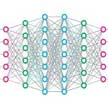 Siloxanes - a class of manufactured silicone derivatives, also know as silicones - are widely used (with an annual volume of 2.8 million tonnes in 2018) in medicine and industrial applications, mostly though in cosmetics and personal care products. However, siloxanes can also be organic contaminants that are persistent and prone to bio accumulation, making it challenging to remove them from various environmental media. Developing suitable sorbents is a cost-effective solution for the removal of siloxanes and Machine Learning offers a powerful tool to identify the effective zeolites out of many millions.
Siloxanes - a class of manufactured silicone derivatives, also know as silicones - are widely used (with an annual volume of 2.8 million tonnes in 2018) in medicine and industrial applications, mostly though in cosmetics and personal care products. However, siloxanes can also be organic contaminants that are persistent and prone to bio accumulation, making it challenging to remove them from various environmental media. Developing suitable sorbents is a cost-effective solution for the removal of siloxanes and Machine Learning offers a powerful tool to identify the effective zeolites out of many millions.
Apr 21st, 2020
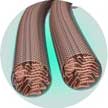 Deep brain stimulation (DBS) is an effective treatment for many neurological disorders, but despite its widespread utilization the underlying mechanisms and downstream effects of DBS remain poorly understood. One major issue to understand the therapeutic mechanism of DBS is to map the wide variety of brain responses at both the local and global levels. Researchers have developed a highly MRI-compatible graphene fiber electrode that enables full activation pattern mapping by functional magnetic resonance imaging under DBS without the occurence of artifacts resulting from magnetic field interference.
Deep brain stimulation (DBS) is an effective treatment for many neurological disorders, but despite its widespread utilization the underlying mechanisms and downstream effects of DBS remain poorly understood. One major issue to understand the therapeutic mechanism of DBS is to map the wide variety of brain responses at both the local and global levels. Researchers have developed a highly MRI-compatible graphene fiber electrode that enables full activation pattern mapping by functional magnetic resonance imaging under DBS without the occurence of artifacts resulting from magnetic field interference.
Apr 20th, 2020
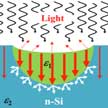 New research shows the formation of large-area R8-Si within the top n-layer of the p-n junction Si solar cell using spherical nanoindentation, and experimentally measured optical properties of R8-Si to demonstrate ten times enhancement in its photocurrent density. After theoretical studies in 2008 indicated that rhombohedral phase (R8) of silicon, which is stable at ambient temperature, has interesting optoelectronic properties suitable for a solar absorber application, this is the first demonstration in experimental studies.
New research shows the formation of large-area R8-Si within the top n-layer of the p-n junction Si solar cell using spherical nanoindentation, and experimentally measured optical properties of R8-Si to demonstrate ten times enhancement in its photocurrent density. After theoretical studies in 2008 indicated that rhombohedral phase (R8) of silicon, which is stable at ambient temperature, has interesting optoelectronic properties suitable for a solar absorber application, this is the first demonstration in experimental studies.
Apr 17th, 2020
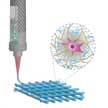 Recent developments in hydrogel chemistries, reinforcement approaches, and crosslinking methods have expanded the applications of 3D bioprinting to pharmaceutics, regenerative medicine, and biomedical devices. A multitude of 3D bioprinting techniques have been developed, but among these different approaches, extrusion-based 3D bioprinting has become a popular technique as it is easy to optimize and all its constituents are economical in price. A recent review elucidates the nuances of 3D bioprinting in a step-by-step guideline format, from its basics to more advanced levels.
Recent developments in hydrogel chemistries, reinforcement approaches, and crosslinking methods have expanded the applications of 3D bioprinting to pharmaceutics, regenerative medicine, and biomedical devices. A multitude of 3D bioprinting techniques have been developed, but among these different approaches, extrusion-based 3D bioprinting has become a popular technique as it is easy to optimize and all its constituents are economical in price. A recent review elucidates the nuances of 3D bioprinting in a step-by-step guideline format, from its basics to more advanced levels.
Apr 10th, 2020
 Those of us who work in the field of nanoscience know all about the uniqueness of the nanoscale. However, now that use cases for nanotechnology are ramping up across virtually all industry sectors, it's essential to take a step back and remember that few in the business world have experience like ours. In fact, many in the C-suite may be unsure of what nanoscience is or how their businesses could benefit from it. That's a big problem - because these decision makers are not going to support nanotechnology projects that they don't fundamentally understand. We need to rise to the challenge and start helping business leaders appreciate the distinctiveness and enormous potential of this rapidly evolving field.
Those of us who work in the field of nanoscience know all about the uniqueness of the nanoscale. However, now that use cases for nanotechnology are ramping up across virtually all industry sectors, it's essential to take a step back and remember that few in the business world have experience like ours. In fact, many in the C-suite may be unsure of what nanoscience is or how their businesses could benefit from it. That's a big problem - because these decision makers are not going to support nanotechnology projects that they don't fundamentally understand. We need to rise to the challenge and start helping business leaders appreciate the distinctiveness and enormous potential of this rapidly evolving field.
 Subscribe to our Nanotechnology Spotlight feed
Subscribe to our Nanotechnology Spotlight feed





